There has been a lot of research related to the pandemic’s effects on patient populations over the last year. Many journals temporarily bypassed lengthy review periods to get COVID data disseminated faster, usually in special or digital editions. Patient advocacy organizations created in-house research projects to help providers understand what their membership was experiencing. Larger organizations like the National Organization for Rare Disorders (NORD) asked all member organizations, like us, to contribute our experiences so they could paint a picture of the impact on the rare disease community for their partners (FDA and the like).
We review two recent articles and one presentation that address aspects of pandemic adaptation in patient care:
OnHold: Resetting the Clock on Pheochromocytoma Treatment
EndocrineNews.org, May 2021
https://endocrinenews.endocrine.org/on-hold-resetting-the-clock-on-pheochromocytoma-treatment/
Author Kelly Horvath summarized an article published in April 2021 about three patients with pheochromocytomas (“pheos”) being seen at Mount Sinai (NYC) in March 2020 when the pandemic began. New York had a very restrictive lockdown, so the typical treatment for a pheo – an adrenalectomy – was considered “semi-elective” since the patients’ blood pressure was acceptably managed with medication. But even with managed hypertension, pheos are considered very unstable because they can suddenly release a dangerous, large amount of hormone, especially when triggered by stress, trauma, or medication. Endocrinologist Dr. Emily Japp had to manage these patients on medical therapy long beyond the standard recommended two weeks prior to adrenalectomy. These patients stayed on medical therapy for 7, 13, and 18 weeks, which led Dr. Japp and her team to observe that extended medical treatment in milder cases of pheo can be safe if carefully monitored. Dr. Japp reported that the use of telemedicine and patient self-reporting made this possible:
“A major lesson learned related to the circumstances posed by the pandemic is how useful telemedicine has been as a tool to extend care to patients, especially in the field of endocrinology. It appears that telemedicine will be more widely utilized to promote engagement with patients, especially those who are of underserved populations…prolonged outpatient medical management of this disorder will only be feasible in cases where the patients are motivated, educated, and able to provide the essential data regarding their symptoms, blood pressures, and pulse rates.”
Scan the QR code or visit the url to read the full manuscript
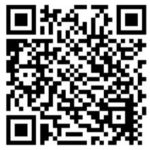
Japp EA, Leiter A, Tsomos EA, Reda SA, Levine AC. Management of 3 Cases of Pheochromocytoma During the COVID-19 Pandemic in New York City: Lessons Learned. J Endocr Soc. 2020;5(2):bvaa198. Published 2020 Dec 23. doi:10.1210/jendso/bvaa198
The Direct and indirect impact of the COVID-19 pandemic on the care of patients with pituitary disease: a cross sectional study
Pituitary, April 2021
https://link.springer.com/content/pdf/10.1007/s11102-020-01106-3.pdf
This study was conducted with 412 pituitary disease patients at the University College London Hospital (UCLH), the largest pituitary center in the UK. Patients were asked if they were directly or indirectly affected by COVID and if they were aware of sick day rules for updosing if adrenally insufficient. Notably, of the patients taking steroid replacement, 97% were familiar with sick day rules and over 70% had an emergency injection on hand.
Of the patients polled, about 65% experienced a delay or change in their treatment and about 50% delayed bloodwork or other diagnostic tests. About another third used telemedicine. Unlike in the US, no patients reported shortages or problems obtaining hydrocortisone.
In the free comments section, patients shared more about the impact of the pandemic in their lives, frequently noting low moods, anxiety, and fear of contracting COVID and uncertainty about the future. In this regard, US and UK patients were completely on the same page.
Scan the QR code or visit the url to read the full manuscript
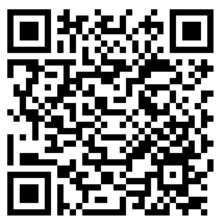
Graf, A., Marcus, H.J. & Baldeweg, S.E. The direct and indirect impact of the COVID-19 pandemic on the care of patients with pituitary disease: a cross sectional study. Pituitary 24, 262–268 (2021). https://doi.org/10.1007/s11102-020-01106-3
Federal Telehealth Policy and Access to Care for Patients
PAN Foundation Guideline for Alliance Partners, May 2021
The PAN Foundation (panfoundation.org or scan QR at the end of this article) administers a co-pay assistance program for an extensive list of medications and conditions. CSRF became an alliance partner a little over a year ago to provide additional assistance and peer support to patients applying for PAN’s Cushing’s program. In return, PAN supports our knowledge and understanding of policy and relevant legislation, and they’ve agreed to present a webinar for our membership about co-pay accumulators and other confusing insurance concepts that come into play when a patient has a complex diagnosis like Cushing’s – stay tuned for that announcement.
In May 2021, PAN Foundation gave a virtual presentation on telehealth policy and patients’ access to care during the pandemic. From March through July 2020, virtually all rules were relaxed regarding patient access to doctors via telehealth across state lines. This allowed safe, fast, and cost-effective care and follow up for patients, and we have not spoken with a single doctor who does not see game-changing benefit in telemedicine availability, especially without restrictions. Having that little taste of what could be at the beginning of the pandemic has become a call to action across many rare patient groups. That access removed geographic stigma and highlighted how important access to expert specialists is for rare patients; quality of life suffers and time to diagnosis is longer when there are barriers to this access.
PAN presented very complicated concepts where the Congressional Budget Office is negatively affected by waiving limitations because of perceived or real impact on costs to Medicare; in this example, the limitation is allowing patients to only access in-state doctors via telehealth. The classic “when it affects me, it becomes important” concept might pay off because several members of Congress personally benefitted from increased access via telehealth at the start of the pandemic. Likely a result of that, several bills have recently been introduced:
Protecting Access to Post-COVID Telehealth Act, H.R. 366 (January 19, 2021)
Authored by Rep. Mike Thompson (D-CA)
Seeks to remove restrictions to telehealth access for seniors with Medicare
Summary here or scan QR: https://www.congress.gov/bill/117th-congress/house-bill/366
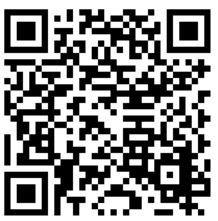
Temporary Reciprocity to Ensure Access to Treatment (TREAT) Act, S. 168 (February 2, 2021)
Authored by Sens. Chris Murphy (D-CT) and Roy Blunt (R-MO)
Seeks to address the problem of reciprocal licensing for physicians by extending flexibilities proven to be effective during the pandemic
Summary here or scan QR: https://www.congress.gov/bill/117th-congress/senate-bill/168
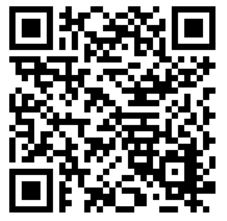
Telehealth Modernization Act, H.R. 1332 / S. 368 (February 25, 2021)
Authored by Rep. Buddy Carter (R-GA) and Sen. Tim Scott (R-SC)
Seeks to remove restrictions to telehealth access for seniors with Medicare
Summary here or scan QR:
https://www.congress.gov/bill/117th-congress/house-bill/1332

Creating Opportunities Now for Necessary and Effective Care Technologies (CONNECT) for Health Act, H.R. 2903 / S. 1512 (April 29, 2021)
Authored by Rep. Mike Thompson (D-CA) and Sen. Brian Schatz (D-HI)
Seeks “kitchen sink” expanded access for telehealth
Summary here or scan QR: https://www.congress.gov/bill/117th-congress/senate-bill/1512
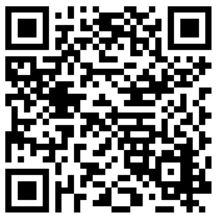
To learn more about PAN Foundation’s co-pay assistance programs for Cushing’s or any other medications you take, visit www.panfoundation.org/find-disease-fund/ or scan the QR code.
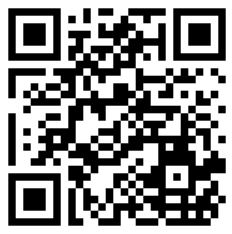




Sorry, comments are closed for this post.